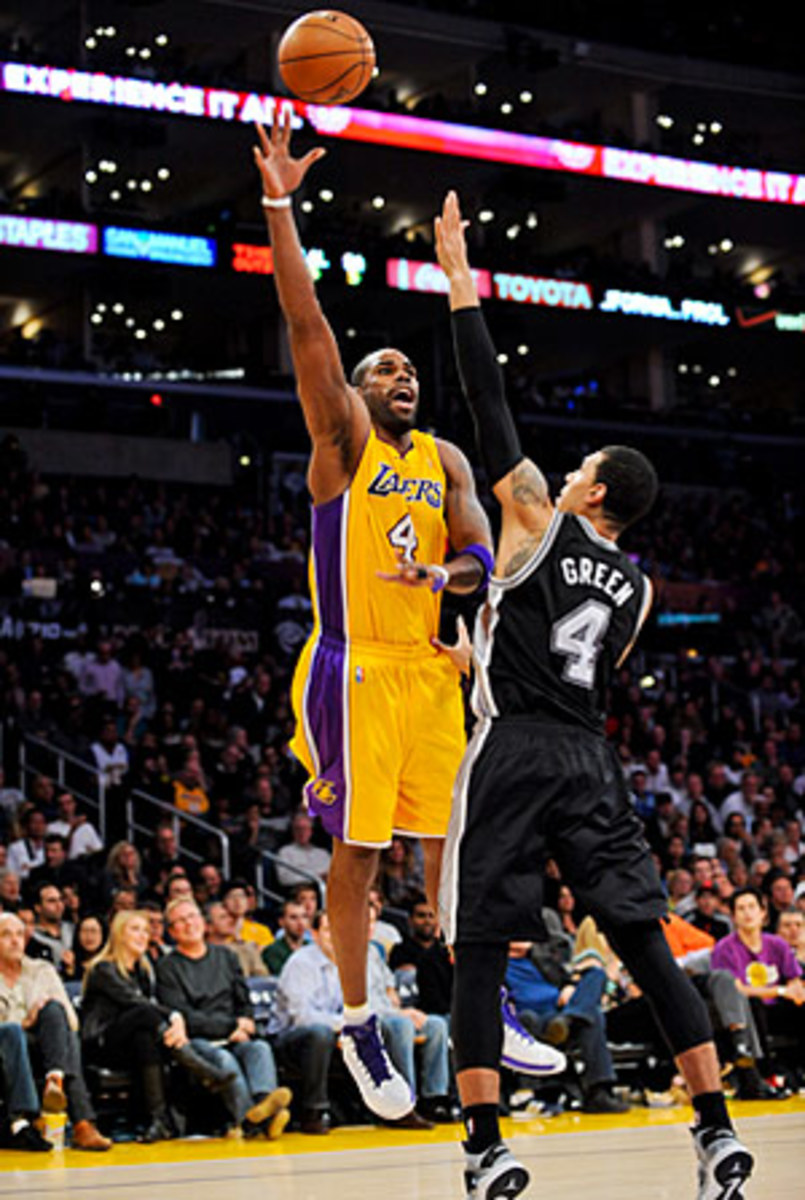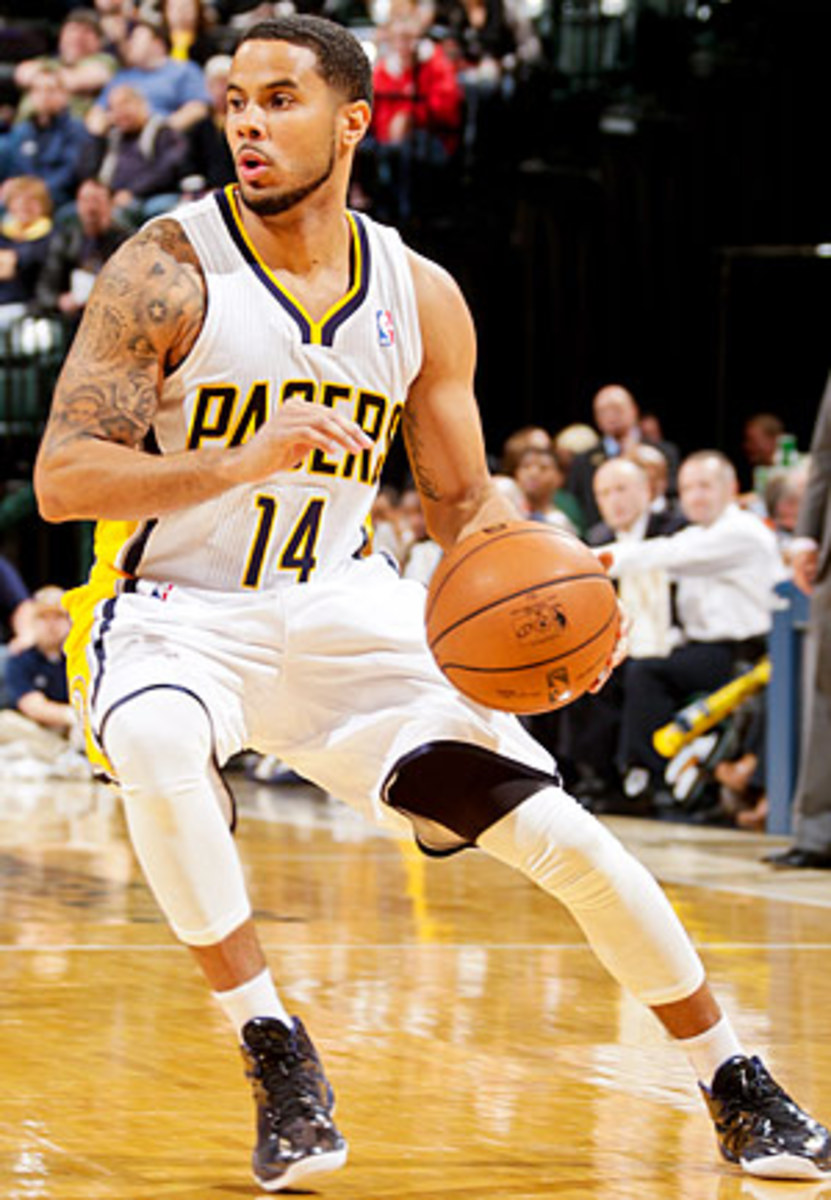Poor bench play undermining Lakers, other teams around the NBA

Reserve Lakers forward Antawn Jamison is averaging only 3.8 points and shooting 37 percent from the field. (Noah Graham/NBAE via Getty Images)

By Rob Mahoney
The pace of the NBA season has slowed from last year's post-lockout sprint, but that doesn't make the full 82-game campaign any less of a slog. Weeks grow heavy with games on games on games, and coaches are forced to dig deep into their rotations to relieve weary starters. Even if we evaluate every game in a vacuum, reserves are inevitably counted on to buoy team performance through extended minutes and have the potential to preserve a favorable margin or erase the starting lineup's good work.
Elite talent may be paramount in the NBA, but it's still crucial that quality teams can go deep into their rotations without a momentum-killing drop-off. Depth matters a great deal, as even title contenders are bound to the limitations of their second-unit players. So today we look at some of the teams for which those requisite reserves create unspeakable problems -- those unlucky franchises for whom a lack of depth is a serious concern.
I suspect that you may have heard these worries before. The Lakers' bench has some players who are useful in very select contexts, but as a unit they are so resolutely ineffective that they stand to cause Los Angeles problems all season. A few coaching tweaks (such as using shooting guard Jodie Meeks more consistently, moving forward Antawn Jamison off the wing and shifting big man Jordan Hill out of lineups with center Dwight Howard) could make the situation a bit more palatable, but with this many below-average players in the rotation, some of the issues are unavoidable.
Even through some early hiccups, the Lakers' starters -- with point guard Steve Blake standing in for the injured Steve Nash -- have performed quite well. But there's a valley in production between L.A.'s top-four players and the rest of the roster, one that frankly could wind up barring the Lakers' entry into the ranks of top-tier contenders. The only realistic hope is that a healthy Howard and/or Nash can help bridge the ravine between starters and reserves in order to make a more presentable net product, but that also puts a bigger burden on two of the heaviest lifters. Nash will need every minute of rest he can get over the course of this regular season, and Howard may have quite a way to go before he's fully able to bear the kind of defensive responsibility he shouldered in Orlando -- much less the largely dead weight of L.A.'s subs. Jamison can be better, Blake will make for a better regular than Darius Morris and forward Devin Ebanks certainly can't play any worse. But the ceiling for the Lakers' second line is just making its minutes manageable -- a stark contrast from the high hopes of their star-studded first unit.
Cleveland Cavaliers
Teams like the Cavaliers are often done injustice by generalization, as if their 2-6 record suggests a plague in every area of their basketball operation. With the Cavs, that couldn't be further from the truth. The starting five of Kyrie Irving, Dion Waiters, Alonzo Gee, Tristan Thompson and Anderson Varejao has actually rated as one of the best high-usage lineups in the NBA, posting early efficiency marks that would trump the top units of even the mightiest contenders. That group has bested opponents by nearly 17 points per 100 possessions, scored at the equivalent rate of the NBA's best offense and defended at a top-10 level.
But the instability of that lineup obscures its overall performance. If coach Byron Scott removes Irving from the mix, Cleveland's offense plummets by an unbelievable 30 points per 100 possessions. If he subs out Varejao, then the defense dips significantly and the Cavs' rebounding rates collapse. If he takes both off the court, then the earth opens up and swallows the Quicken Loans Arena whole. Minutes without Irving and Varejao are downright apocalyptic for the Cavs, largely because those two make the rest of the starting five look better from a statistical standpoint than it really is, leaving the team with no other means to elevate the play of one of the NBA's worst benches.
Some of the reason for that is explainable and expected (the limitations of Donald Sloan, Samardo Samuels and Luke Walton), but other areas of Cleveland's reserve struggles are hardly so (Jon Leuer's inability to find his shot, C.J. Miles' implosion). Regardless, there's enough negative influence at work in the rest of the Cavs' roster to undo all the good the starters accomplish and then some, resulting in the third-worst net rating in the league. It takes a truly special level of ineptitude to make a fantastic, highly used lineup look this bad, but what can I say -- the Cavs' bench is full of miracle workers.
The Blazers live in a harrowing reality in which Sasha Pavlovic -- he of 2.6 points and 1.6 rebounds per game -- is legitimately one of their best bench players. Such is the way of it when Nolan Smith, Ronnie Price and Jared Jeffries all find a place in a team's rotation, forcing the Blazers to arrange themselves in a way that helps mitigate the meager contributions of the second unit.
That said, credit coach Terry Stotts for refusing to use his bench as a functional second unit. Virtually all of Portland's lineups are a starter-reserve hybrid, relying on Damian Lillard, LaMarcus Aldridge, Nicolas Batum and Wesley Matthews to smooth over the rougher patches of the subs. It's worked in some cases (rookie center Meyers Leonard rotates in seamlessly for J.J. Hickson), but failed miserably in others. Aldridge's relatively inefficient season certainly doesn't help matters, but otherwise the challenges of offsetting such inferior playmaking (Price) and decision-making (Smith) are often far too great. Portland's starting five has some talented players, but just lacks the firepower to adequately overcome a flock of second-unit albatrosses.
Backup point guard D.J. Augustin has struggled in his first few weeks with the Pacers. (Ron Hoskins/NBAE via Getty Images)

Lumping in the Pacers with this bunch may be slightly unfair considering the strain that losing leading scorer Danny Granger has had on Indiana's entire rotation. But their inclusion seems justifiable given the struggles of Gerald Green, Sam Young and Lance Stephenson, both in and out of the starting lineup.
The Pacers had one of the worst benches a season ago, and to general manager Kevin Pritchard's credit, numerous changes were made in order to theoretically make the subs more reliable. Green was signed as a sixth-man scorer, the kind of dynamic shooter-slasher hybrid that the Pacers missed so badly in last season's playoffs. Point guard D.J. Augustin was poached from Charlotte, set to replace Darren Collison, who had been dealt to Dallas for reserve center Ian Mahinmi.
But none of those moves has been able to provide much value to coach Frank Vogel, who was forced to give up his best reserve in Collison for a trio that regularly underwhelms. Green's scoring should eventually get back on track, and Mahinmi is simply a passable role player made to look less useful by his surroundings. But Augustin's play provides some real cause for concern. The Pacers don't appear to be equipped to create the kinds of perimeter looks for Augustin that would validate his upgrade over Collison in three-point shooting, and Augustin is otherwise limited as a creator. In July, dropping Collison in a sign-and-trade for Mahinmi seemed a bit questionable, but potentially harmless. But after seeing Augustin's misfit with Pacers lineups unable to benefit from his presence or access his talents (much less entirely cover for his defensive weaknesses), it's hard to consider the deal to be anything other than a stifling blunder.
But, hey, Tyler Hansbrough's been playing fairly well, so the Pacers have that going for them.
Statistical support for this post provided by NBA.com
